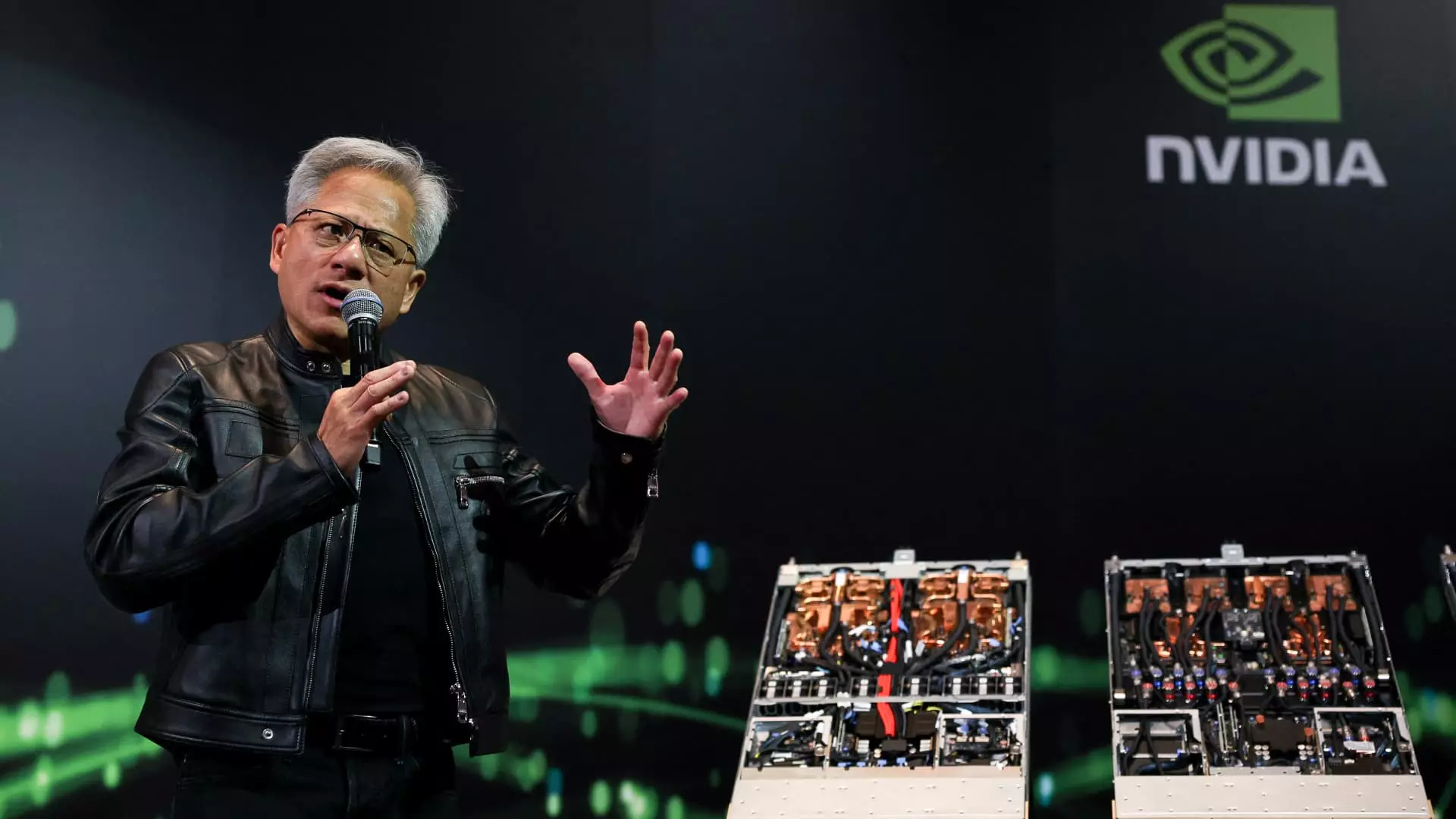Nvidia’s success story began with its uncanny ability to dominate the graphics processing unit (GPU) market, particularly in sectors reliant on artificial intelligence (AI). The company has thrived on the escalating demand for high-performance computing, exhibiting astronomical growth rates in recent quarters. However, as we glance toward Nvidia’s upcoming earnings report, the atmosphere is undeniably somber. The shadow of regulatory challenges looms large, with the Trump administration throwing a wrench into the wheel of Nvidia’s thriving operations. The recent imposition of export restrictions to China, particularly concerning the H20 chips tailored for the Chinese market, raises profound questions about the sustainability of Nvidia’s growth trajectory.
The U.S. government’s apprehension regarding the potential military applications of AI chips has led to stringent actions, including the expectation for an export license for crucial products. This cautious stance toward trade might stem from a genuine concern for national security but ultimately feels more like a chokehold on innovation instead of a responsible policy measure. Nvidia’s recent announcement of a $5.5 billion write-down on inventory due to these new hurdles is not just a staggering figure; it symbolizes the potential catastrophe facing a company previously considered untouchable in the tech arena. Analysts have decried this as the largest write-off in the history of the semiconductor industry, a stark warning about the fragility underlying capitalistic successes, particularly in a globally interconnected economy.
Disruption Ahead: The Fallout of Reduced Market Share
The ramifications of the trade restrictions are palpable, with Nvidia’s market share in China plummeting from 95% to an alarming 50%. While Nvidia still boasts impressive revenue growth projections—around 66% year-over-year—this number is along a descending curve compared to an overwhelming 250% growth from the previous year. There’s no sugar-coating this situation; Nvidia is confronting a harsh reality. The company’s reliance on a single foreign market has laid it bare against the onslaught of geopolitical tensions and protectionist policies.
In a world where competitive technology is increasingly dictated by national boundaries, one has to wonder: Is Nvidia marching toward self-sabotage? The company itself has stated that the restrictions may motivate China to bolster its own semiconductor capabilities. Innovations may rapidly emerge in a nation that is increasingly focused on self-reliance. Thus, while the U.S. attempts to stymie the competition through legislative measures, it could inadvertently fuel an aggressive and innovative local alternative in China which, ironically, may pose an even greater threat to U.S. technological holdings in the future.
Regulatory Tangles: Is Relief on the Horizon?
In a desperate attempt to soften the blow from the trade restrictions, Nvidia recently received a minor victory: the Trump administration rescinded an even more draconian regulation known as the “AI diffusion rule.” This decision, albeit minor in the grand scheme, offered a flicker of hope, implying a shift toward a more nuanced regulatory landscape. However, the relief could be ephemeral at best, as the government hinted at replacing these restrictions with more straightforward guidelines. The ambiguity surrounding what will be permitted in terms of exports to China adds another layer of complexity to Nvidia’s already convoluted outlook.
While advocacy efforts for necessary licenses from the U.S. government may seem like a proactive approach from Nvidia, the narrative is shifting. Will these efforts yield fruit, or are they simply further distractions from the more alarming trend of rising competitiveness in China? That the company is left lobbying for permissions rather than confidently exporting its products reveals a weakened position in an industry meant to be at the forefront of technological progress.
Analyst Uncertainty: A Glimpse into the Future
As we move closer to Nvidia’s earnings call, analysts are paradoxically optimistic yet cautious. Forecasts predict a growth rate nearing 53% for the upcoming quarter, but the unpredictability surrounding H20 and its reception in the market throws this optimism into question. In a world where economic conditions and geopolitical risks interlace seamlessly, standing on shifting sand has become the new norm.
The analysts at Morgan Stanley couldn’t be more correct: the looming skepticism over the future of Nvidia’s chips, especially concerning China, weighs heavily on investor sentiment. Are we witnessing the culmination of Nvidia’s power, or are we just scratching the surface of what may become a cautionary tale about the perils of aggressive growth combined with geopolitical risk? The answers remain tantalizingly out of reach, hauntingly overshadowed by an uncertain geopolitical landscape that continues to evolve.
Nvidia’s saga is indicative of the struggle all businesses face today: how to innovate and grow in a climate fraught with external challenges and entering a period of dire uncertainty. The juxtaposition of their near-mythical status against the realities of trade and technological competition sets the stage for a tense future, not just for Nvidia but for the entire tech industry at large.

